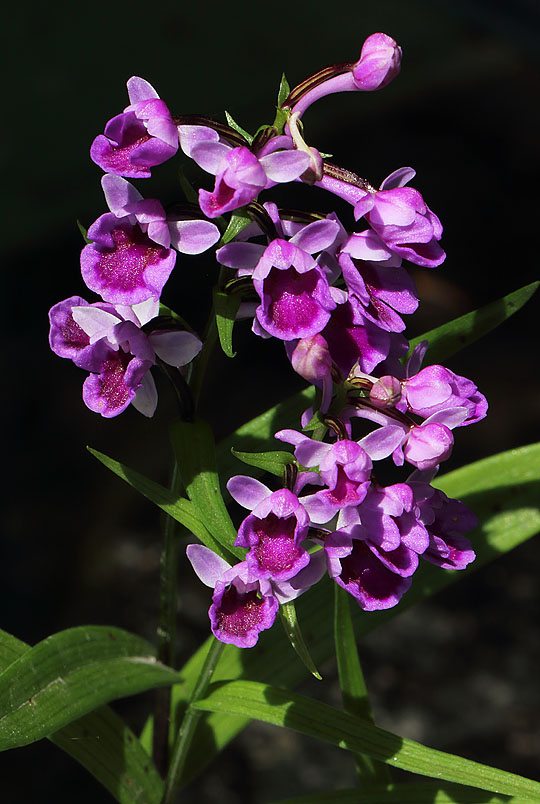naoki
Well-Known Member
This is from Shikoku Garden via Kusamono Gardens. I got them this spring (here is the previous thread). They turned out to be very pretty, so I'm sharing the photos here!
There are many natural variation as well as artificially selected variation in the flower color, shape, and leaf variegation. It is a popular orchids in Japan similar to Neofinetia falcata or Dendrobium moniliforme. It is called Uchouran in Japan, and they frequently use chinese characters, which means "Butterfly wing orchids". Some people recently made up the Chinese character, so it is not the origin of the name. In 1960-70's, cultivation of this species became really popular, and lots of plants were collected since people were paying lots of money for rare varieties. But in 1980-90's, the mass production became possible via asymbiotic germination, and the price dropped. Because of the excessive collection, they are sadly still rare in nature.
Shikoku Garden seems to sell "mixed color" without specifying the variety. The one I got is probably categorized as Niou-kei Shiroji-Kouitten-ka (仁王系白地紅一点花) type. Niou-kei means niou-lineage. Niou is a guardian of Buddhism temple (info in Wikipedia). There was a variety called Niou, which had a large lip. So those with a large lip is called Niou-kei (descendants from Niou). Shiroji means white base. Typical individual has pink/purple color. Kouitten-ka means flowers with Red spot. Typical ones have bunch of dots on the lip, but this one has a big blob of purple (well, Japanese "red" has a wider meaning, and it could include purplish color).
A single big spot in pink background can be found in nature, and it is a recessive trait. White background is also found in nature, and it is also a recessive trait. So this individual is a double recessive homozygotes created artificially by crossing.
The last time I tried this species, I could keep it only 2 seasons or so (in other words, I don't know what I'm doing). I hope that I'll do better this time.
Notice that the left one, which is still opening, has a bit more pink on the dorsal sepal. I'm not sure if this is considered as Shiroji (white base).
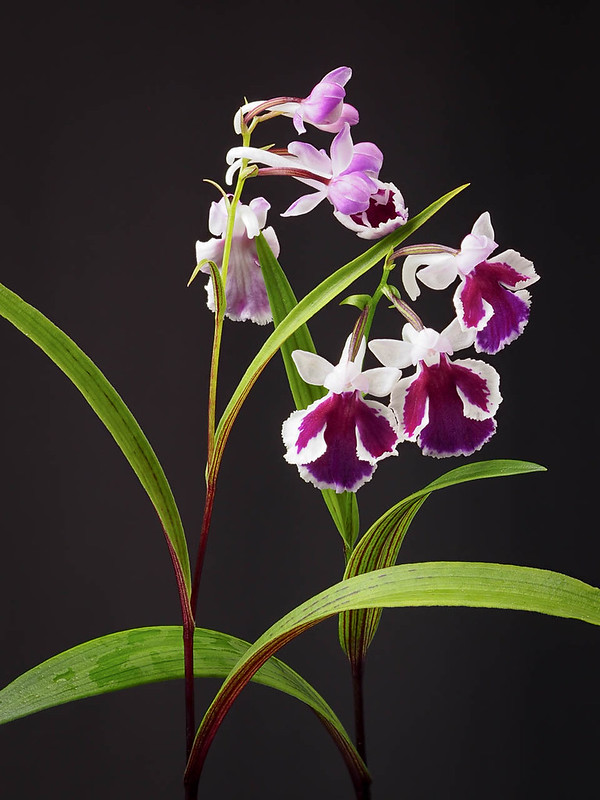
Ponerorchis graminifolia on Flickr
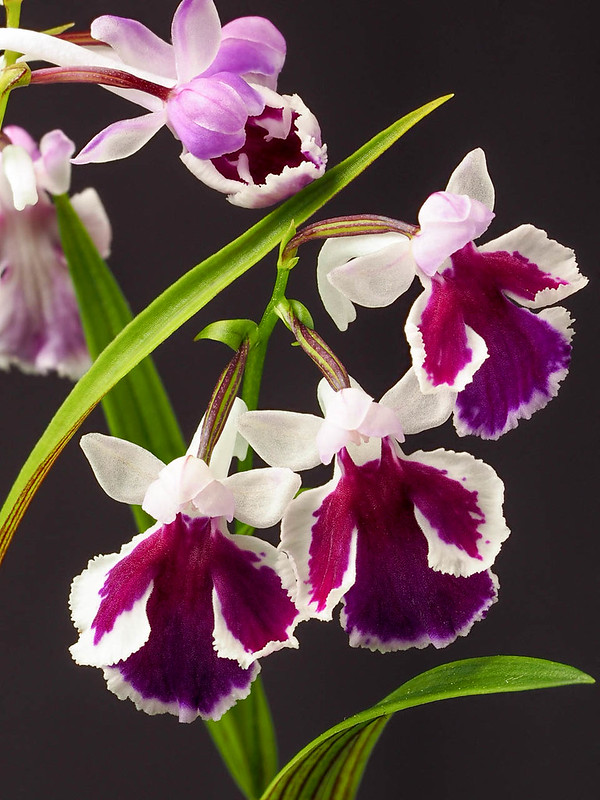
Ponerorchis graminifolia on Flickr
The gradation of red to pink is so wonderful:
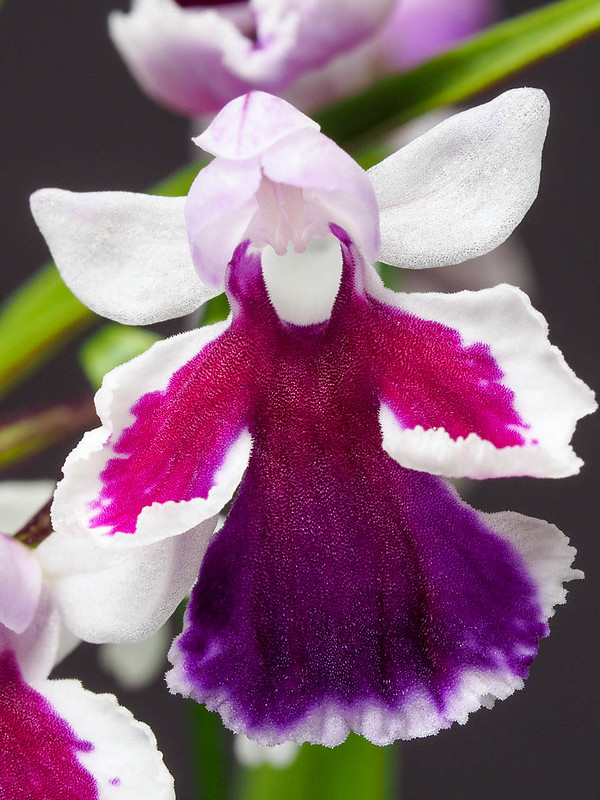
Ponerorchis graminifolia on Flickr
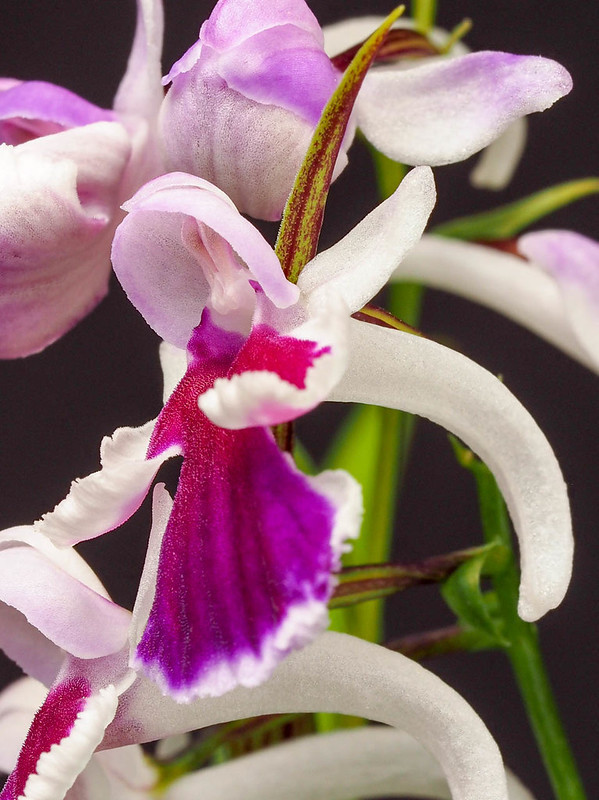
Ponerorchis graminifolia on Flickr
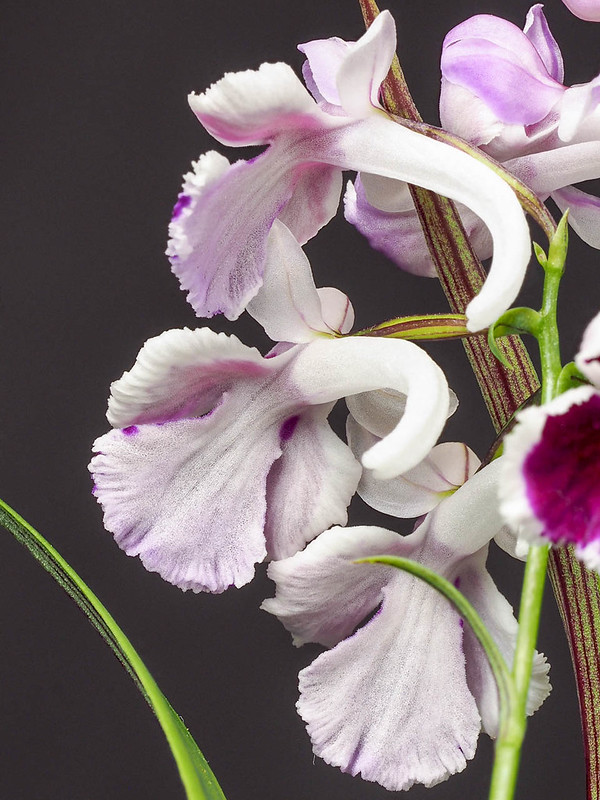
Ponerorchis graminifolia on Flickr
There are many natural variation as well as artificially selected variation in the flower color, shape, and leaf variegation. It is a popular orchids in Japan similar to Neofinetia falcata or Dendrobium moniliforme. It is called Uchouran in Japan, and they frequently use chinese characters, which means "Butterfly wing orchids". Some people recently made up the Chinese character, so it is not the origin of the name. In 1960-70's, cultivation of this species became really popular, and lots of plants were collected since people were paying lots of money for rare varieties. But in 1980-90's, the mass production became possible via asymbiotic germination, and the price dropped. Because of the excessive collection, they are sadly still rare in nature.
Shikoku Garden seems to sell "mixed color" without specifying the variety. The one I got is probably categorized as Niou-kei Shiroji-Kouitten-ka (仁王系白地紅一点花) type. Niou-kei means niou-lineage. Niou is a guardian of Buddhism temple (info in Wikipedia). There was a variety called Niou, which had a large lip. So those with a large lip is called Niou-kei (descendants from Niou). Shiroji means white base. Typical individual has pink/purple color. Kouitten-ka means flowers with Red spot. Typical ones have bunch of dots on the lip, but this one has a big blob of purple (well, Japanese "red" has a wider meaning, and it could include purplish color).
A single big spot in pink background can be found in nature, and it is a recessive trait. White background is also found in nature, and it is also a recessive trait. So this individual is a double recessive homozygotes created artificially by crossing.
The last time I tried this species, I could keep it only 2 seasons or so (in other words, I don't know what I'm doing). I hope that I'll do better this time.
Notice that the left one, which is still opening, has a bit more pink on the dorsal sepal. I'm not sure if this is considered as Shiroji (white base).

Ponerorchis graminifolia on Flickr

Ponerorchis graminifolia on Flickr
The gradation of red to pink is so wonderful:

Ponerorchis graminifolia on Flickr

Ponerorchis graminifolia on Flickr

Ponerorchis graminifolia on Flickr































